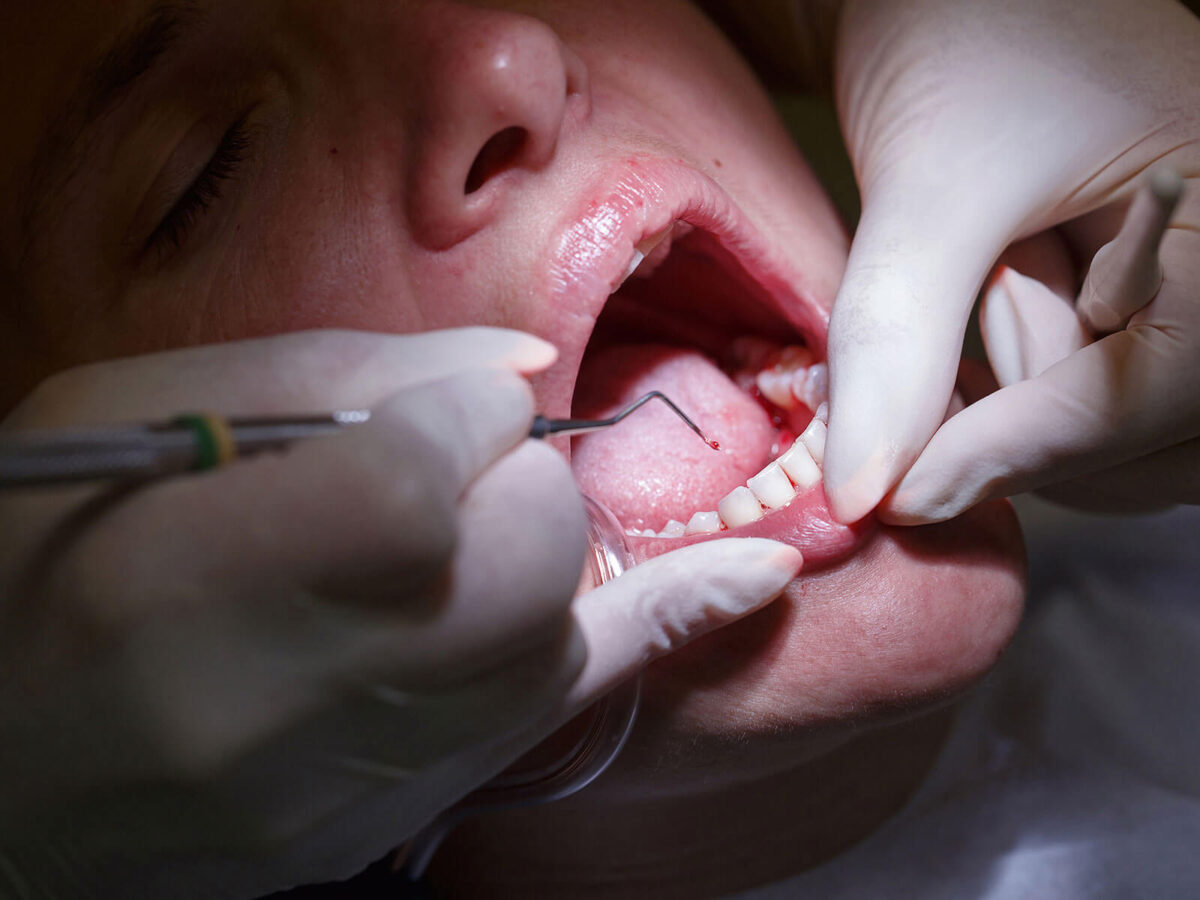Blog
Dental hygiene tips for healthy teeth & gums

4 Signs You Have Periodontal (Gum) Disease
Periodontal or gum disease is a common but deadly disorder affecting the tissues surrounding and supporting the teeth. Recognizing early indicators of gum disease is critical for appropriate intervention and preventing the condition from worsening. This comprehensive guide will look at four significant indications that may signal periodontal disease, empowering people to take proactive steps to preserve optimal gum health.
A Glimpse of Periodontal (Gum) Disease
Periodontal disease is an inflammatory disorder that affects the gums and can progress to harm the bone that supports the teeth if left untreated. The deposition of plaque—a sticky film of bacteria on the teeth and gums—is the primary cause. Gingivitis is the early stage of gum disease, and if not treated, it can progress to periodontitis, which is more severe and can lead to tooth loss.
Signs of Periodontal Disease:
1. Bleeding Gums:
Bleeding gums are a standard early indicator of gum disease, especially during brushing or flossing. During primary oral care, healthy gums should not bleed.
- Possible Cause: Plaque deposition along the gumline can irritate and inflame the gums, resulting in bleeding. This is frequently an early sign of gingivitis.
- What to Do: If you observe bleeding gums, it is critical that you pay attention and do not dismiss this symptom. Maintain regular oral hygiene habits, such as gentle brushing and flossing. Make an appointment with your dentist to have your gums checked.
2. Persistent foul Breath (Halitosis):
Chronic bad breath that persists despite regular oral hygiene may indicate gum disease.
- Possible Cause: Plaque bacteria produce toxins that contribute to poor breath. As gum disease symptoms worsen, spaces between the teeth and gums can harbor additional germs, exacerbating the problem.
- What to Do: Maintain good dental hygiene by washing your tongue and using antimicrobial mouthwash. If foul breath persists, it is best to seek professional dental help to determine and treat the underlying reason.
3. Receding gums and tooth appearance changes:
Receding gums, in which the gums move away from the teeth, and changes in dental appearance, such as increased tooth length, may indicate gum disease.
- Possible Cause: Advanced gum disease (periodontitis) can weaken the supporting components of the teeth, including the bone and gums. This can cause gum recession and changes in the look of the teeth.
- What to Do: If you observe changes in your teeth or your gums appear receding, see a dentist. Early management can assist in preventing further tooth damage and loss.
4. Swollen, sensitive, or Red Gums:
Swollen, sensitive, or red gums are signs of inflammation, a significant component of periodontal disease signs.
- Possible Cause: Inflammation may arise due to bacteria in plaque. As the immune system reacts, swelling, pain, and a change in the color of the gums might occur.
- What to Do: Keep an eye out for any changes in the appearance and feel of your gums. Practicing good oral hygiene and scheduling frequent dental check-ups can aid in the early detection of inflammation.
Other Periodontal disease signs:
Significance of Gum Pockets: Deepening pockets or gaps between teeth and gums can signal the progression of gum disease symptoms.
a. Loose or moving Teeth:
Loose or moving teeth are severe indicators of advanced periodontitis, which affects the bone that supports the teeth.
b. Pain or Discomfort:
Gum pain or discomfort, especially during chewing, might indicate severe gum disease.
Preventive and therapeutic measures:
a. Keep Consistent Oral Hygiene:
Brush your teeth twice daily with fluoride toothpaste, floss daily to remove plaque between your teeth, and use an antimicrobial mouthwash.
b. Preventive Action:
Schedule regular dental check-ups and cleanings to monitor and preserve oral health. Early identification of gum disease allows for prompt treatment.
c. Quit Smoking:
Smoking is a significant risk factor for gum disease. Quitting smoking can help improve gum health.
d. Healthy Eating:
A well-balanced diet benefits dental and systemic health. Reduce your sugary foods and beverages, leading to plaque development.
e. Prompt Treatment:
If symptoms of gum disease are present, seek prompt dental treatment. Early intervention can prevent the problem from worsening.
Conclusion:
Recognizing Periodontal disease signs are critical for good oral health. Bleeding gums, chronic poor breath, changes in tooth appearance, and swollen or painful gums are all warning signs. Individuals can proactively avoid and address gum disease by practicing proper oral hygiene, scheduling regular dental check-ups, detecting and preventing periodontal issues, and seeking timely treatment. This will ensure a healthy and brilliant smile for years to come.


